Loons and Dabbling Ducks on the Lake
Jon spent an hour with Pablo near the edge of the lake while his parents were off somewhere. Pablo is quite a character! He groomed, looked around, dove and practiced flying. He is quickly becoming Jon’s BFF (best feathered friend)!
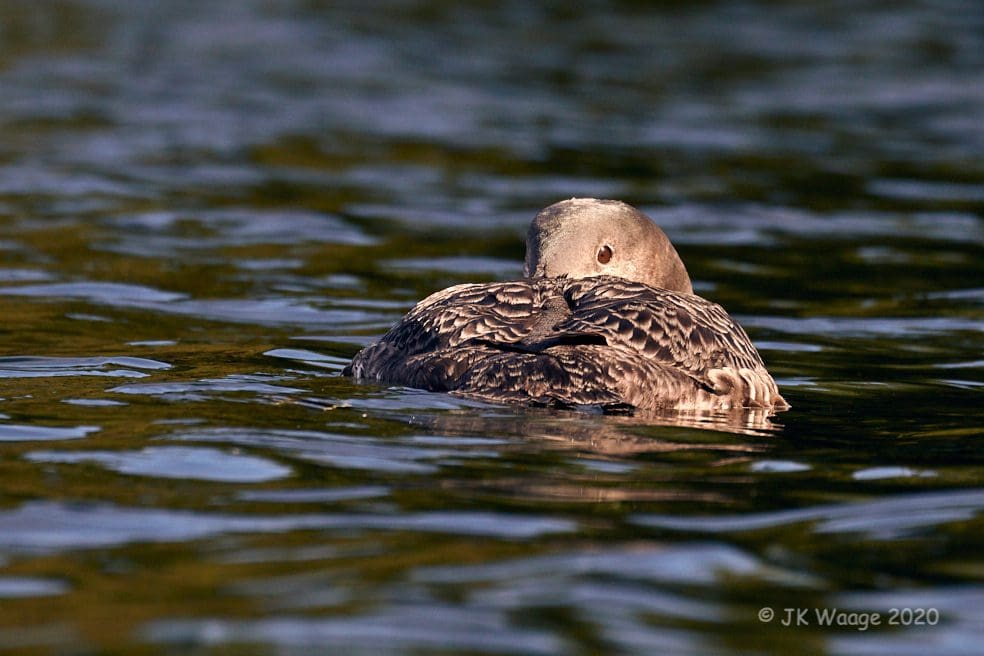
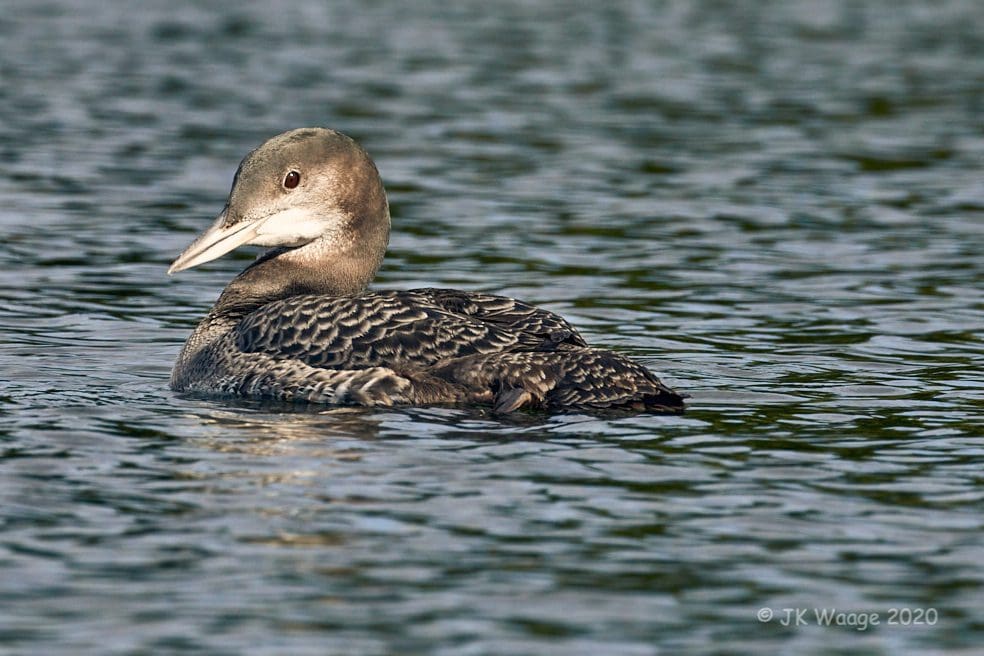
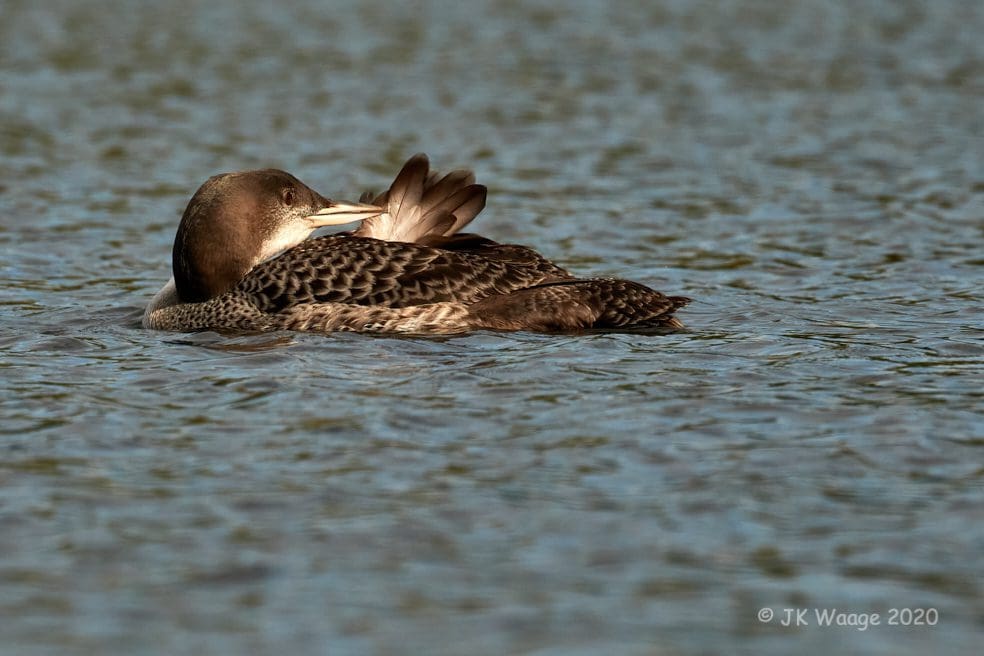

Pablo eventually headed out into the lake and made a few long dives. When the wind came up he faced it and spread his wings. He started running on the surface as loons have to do to get airborne. That was followed by one big flap and a long glide.

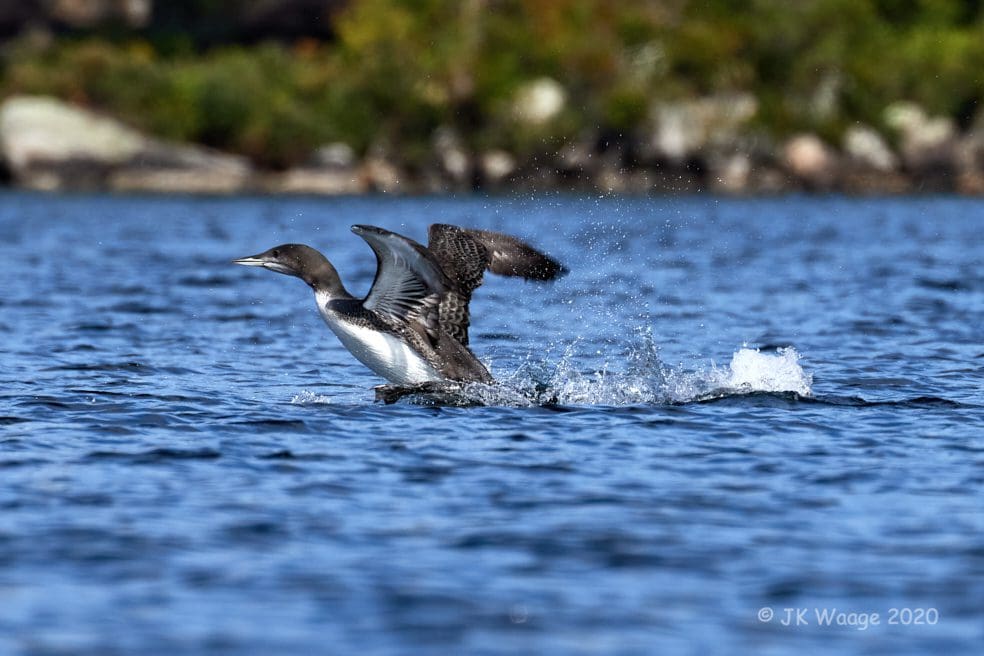



This photo is out of sequence, but maybe it reflects both of our feelings after Pablo’s try at flying.
Dabbling Ducks on the Lake
|

This week Jen witnessed a rare visit to the lake by another kind of dabbling duck, five Northern Shovelers. This is the first recorded sighting of Northern Shovelers on Pleasant Lake, and the earliest autumn recording for Merrimack County. In North America they breed in the Northwest of the United States and Canada. They are infrequent migratory visitors to NH in the spring and fall.

This week Jen witnessed a rare visit to the lake by another kind of dabbling duck, five Northern Shovelers. This is the first recorded sighting of Northern Shovelers on Pleasant Lake, and the earliest autumn recording for Merrimack County. In North America they breed in the Northwest of the United States and Canada. They are infrequent migratory visitors to NH in the spring and fall.

They are called Shovelers (Spatula clypeata) because they have a distinctively spatula shaped bill.

The bill is designed for straining small crustaceans, vegetation and invertebrates from the water. Here is a close up (Jen took elsewhere) showing the comb-like lamellae (arrow) along the edge of the bill that are used for straining food from water and mud.
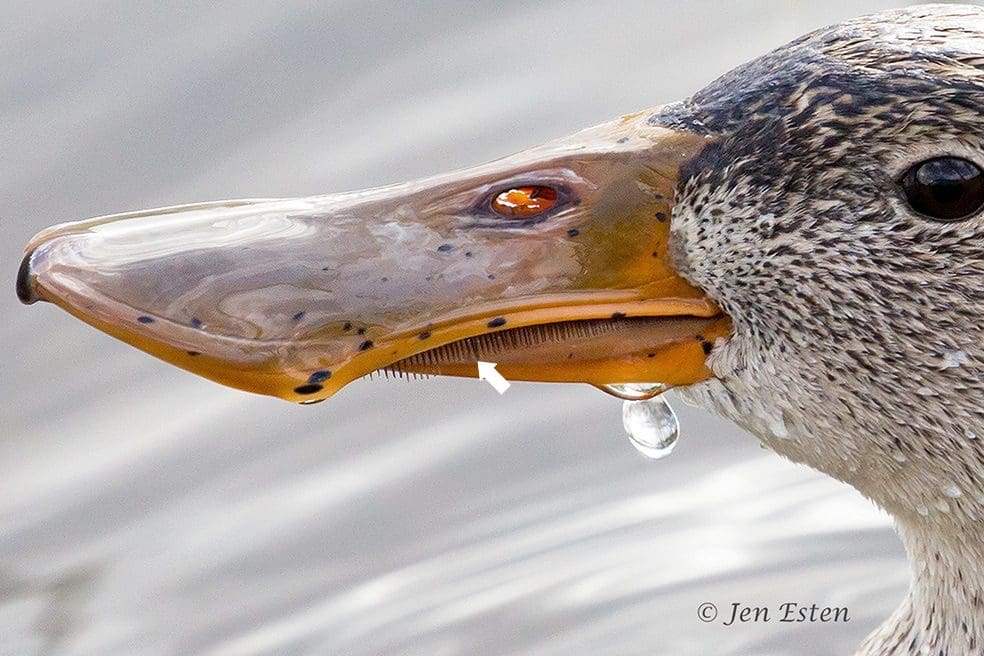
They sweep their bills from side to side on the water’s surface, and also dabble through mud in shallow water like Mallards.
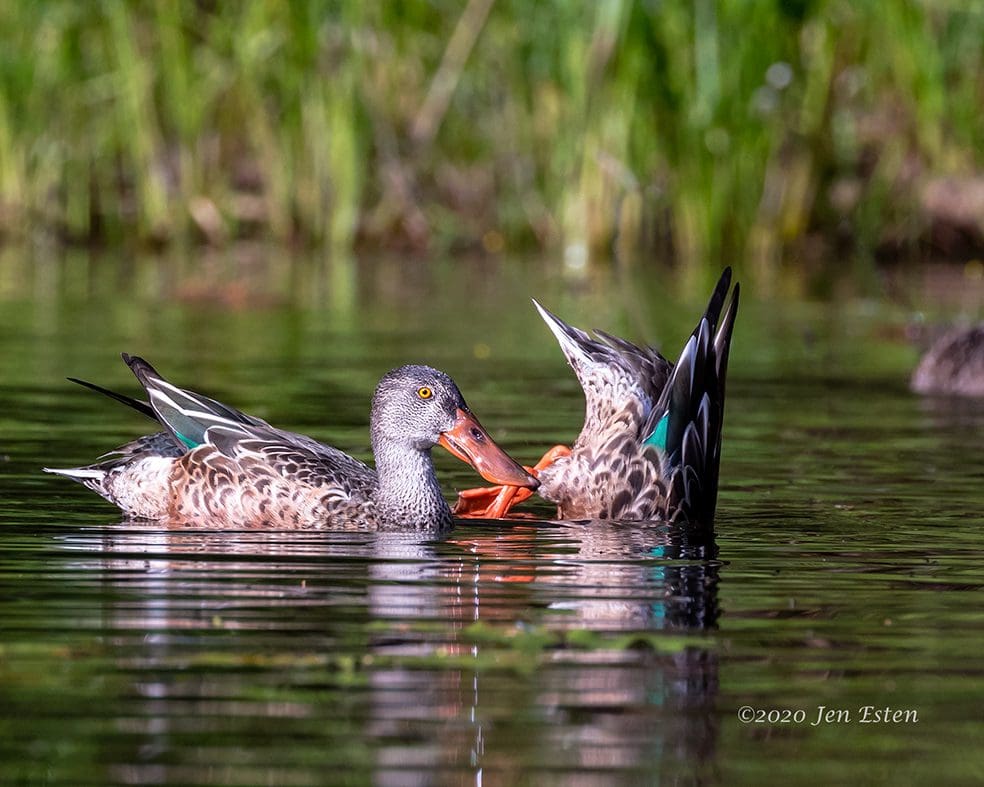
|
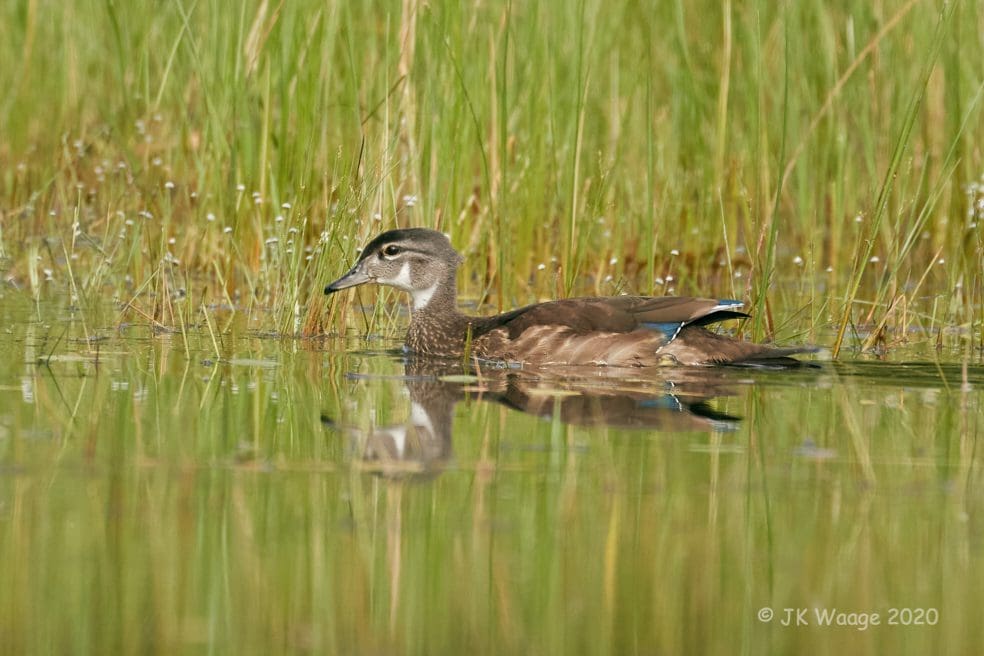
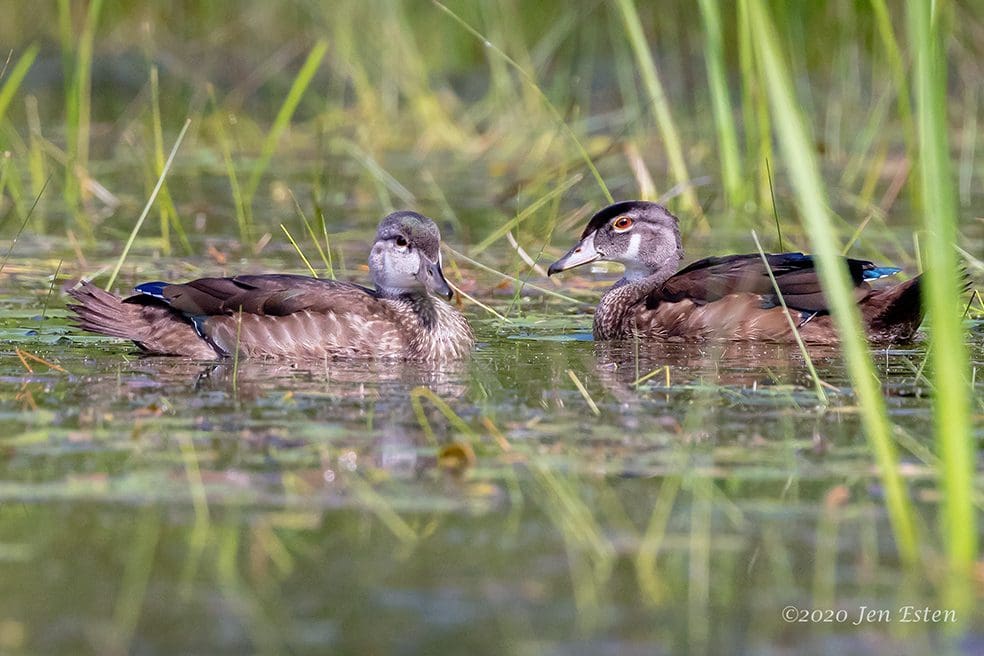 Wood Ducks naturally nest in tree holes, usually near water but sometimes as far as a mile away. You have probably seen large bird boxes on poles in the water in local lakes and ponds. These supplement the natural breeding places and help maintain the Wood Duck population. They are also favorite nesting places for mergansers.
Wood Ducks naturally nest in tree holes, usually near water but sometimes as far as a mile away. You have probably seen large bird boxes on poles in the water in local lakes and ponds. These supplement the natural breeding places and help maintain the Wood Duck population. They are also favorite nesting places for mergansers.
Photographs and Words by Jen Esten and Jon Waage
